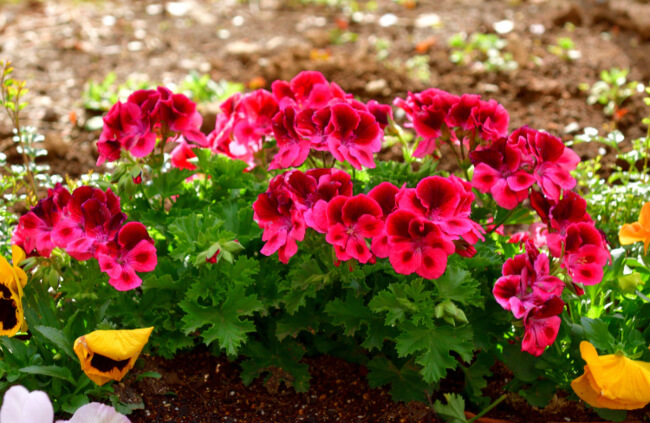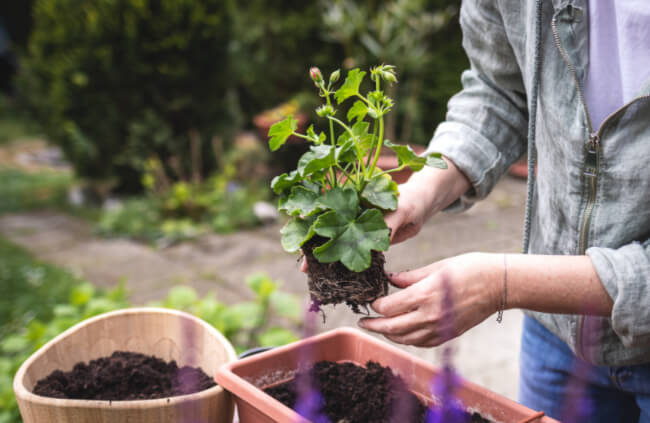Scented Geraniums or Pelargoniums are easily cultivated in pots, whether inside or outdoors during spring-like weather. They are excellent for adding beautiful scents to your garden.
If you are living in a warm location, you can cultivate these wonderfully scented flowers in a container outdoors or placed in the soil for the entire year. If there are cold winters where you live, you need to guard these flowers from frost so you can keep them inside your home for the winter season.
These flowers are loved and collected by many. Enjoy this growing guide for the very best twelve month tips and great ideas for trimming, transplanting and preventing insect problems. Take joy in your Scented Geraniums!
More...
How to Grow Pelargoniums in Australia

Best Conditions for Growing Pelargoniums
Best Soil to Use
The dirt for your geraniums should be free of excess water. A medium fertile level is ideal; you should not raise your scented geraniums in overly fertile dirt. This will result in less of a fragrance from the leaves.
Also, the pH level needs to be neutral to mildly acidic, around 6.0 is ideal.
Preferred Sunlight and Temperature
Pelargonium thrive in plentiful sunshine, and love exposure to outside light when next to a window. If planting outside, a little warm sunlight will do just fine. They should also do well in partly sunny/cloudy conditions.
While they love the sun, don’t let them become too overly hot. Around 20°C (70°F) is just right.
Caring for Scented Geraniums
Less is More When Fertilising Pelargoniums
Be sure to use limited amounts of fertiliser. In this case, it’s to your advantage to fertilise a little less than to overload it with minerals, including Nitrogen. You can use an organic fertiliser, or a fertiliser that releases gradually and has plenty of micro nutrients.
Follow the instructions on the label and begin using the smallest amount first. Always fertilise from springtime until autumn, never fertilise during the winter months when your flowers will naturally slow the growing process.
Watering Pelargoniums
Scented Geraniums tend to be very resilient and don’t need to be watered too frequently. That is one reason why they’re so easily maintained. Don’t let them become too dry, but don’t water them excessively. If you allow the dirt to be too overly wet for too long, it can cause problems with the roots.
If you have a tendency to water more than is needed, you should house your Scented Geraniums in a clay pot instead of plastic to allow for possible excess water to seep out.
Trimming and Shaping Pelargoniums
If you are keeping your Scented Geranium on the windowsill and it has now grown too large, just wait until springtime and prune it back. Gently squeeze new buds between thumb and forefinger to allow for vigorous repeated growth and plentiful branches.
If any branch extends beyond the others, you may trim it down as well. You may also replant any tips you have trimmed off during the summer. You should never be worried about pruning your plant. Every time you prune it, it will grow back fuller.
Always take off and discard faded pedals on a regular basis to keep your plant looking its best.


Get Your Free Guide:
Master Growing Australian Natives eBook
A Must Have Complete Guide for Every Australian Garden
Get Your Free Guide:
Master Growing Australian Natives eBook
A Must Have Complete Guide for Every Australian Garden

Transplanting Scented Geraniums
If your geraniums become too large for their pot, transplant them to a larger pot in the springtime. You will get the best results from a clay pot, which whisks away excess water. Keep in mind, you can regulate the size of the plant by trimming and cutting tips.
If the scented geranium seems to be growing too large, think about planting a tip you’ve trimmed off to replace the original.
Protecting Your Scented Geranium From Bugs
Scented geraniums (Pelargonium) don’t usually have any bug problems, but always check to make sure. White flies, spider mites, mealy bugs and aphids may be removed with a homemade neem oil spray if needed.
Always examine and pay attention to the instructions on the label and provide adequate ventilation which will help fend off any diseases, for example, botrytis or geranium rust.
Explore our in-depth guide on growing Geraniums and discover a selection of the best varieties to grow in Australia.
Published on June 5, 2023 by Maisie Blevins
Last Updated on November 21, 2024




